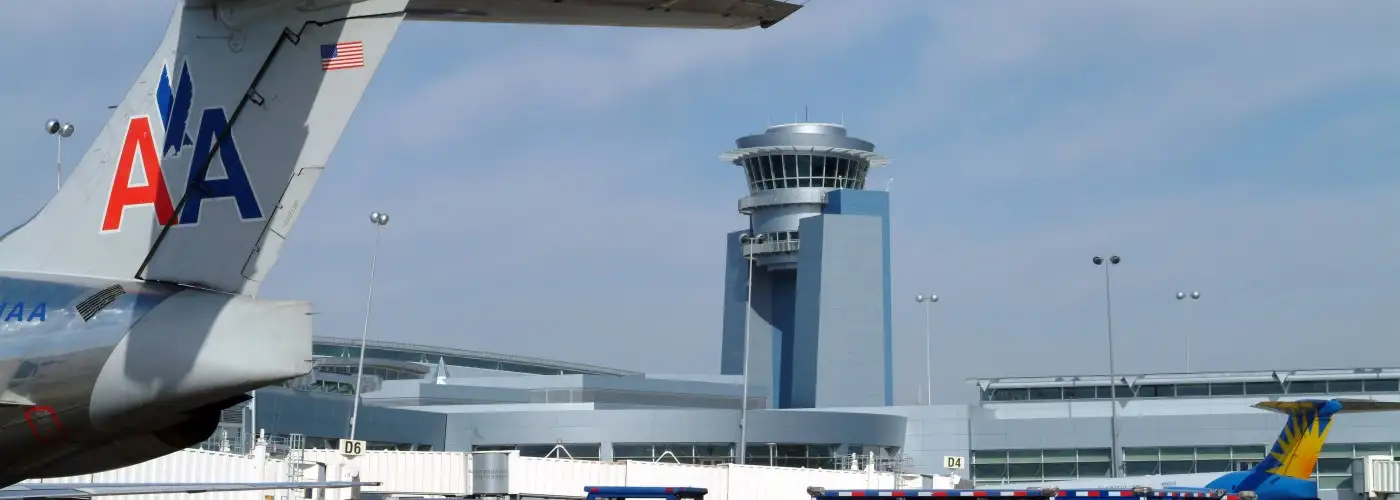After months of wrangling via the media, and in the final weeks before the matter is set to go to trial, the Justice Department and would-be merger partners American and US Airways are finally discussing terms of a deal that would avert litigation and allow the tie-up to proceed.
That’s according to reports by the New York Times and Reuters, which quoted Attorney General Eric Holder at length. Among his comments: “What we have tried to focus on is to make sure that any resolution in this case necessarily includes divestitures of facilities at key constrained airports throughout the United States.”
Implicit in Holder’s remarks was the demand that concessions go beyond divesting slots at Regan National Airport, where the two airlines combine to control around two-thirds of the traffic. Countering claims by American and US Airways that there was minimal overlap between their route networks, the DOJ has maintained that there are close to 1,000 city pairs that would be dominated by the two airlines if they merged.
Holder did not disclose how many of those routes would have to be divested in order to mollify the DOJ’s antitrust concerns.
Since the DOJ filed its suit to block the merger in August, American and US Airways have orchestrated a very public show of support for the tie-up from unions, legislators, and pro-business groups. Unfortunately for the traveling public, there’s been little in the way of anti-merger campaigning by consumer-advocacy groups.
Although Holder’s remarks indicated a markedly more conciliatory stance toward the matter, he stopped well short of throwing in the towel. “We will not agree to something that does not fundamentally resolve the concerns that were expressed in the complaint.”
Lest it be forgotten, those concerns were—and are—that consolidation will result in reduced competition and higher fares.
Antitrust Trial Timeline
If no agreement between the DOJ and the airlines is reached in the interim, the trial to adjudicate the DOJ’s suit to block the merger is set to begin on November 25, and is expected to last for around 10 days. Other related events scheduled to take place in the run up to the trial’s start:
November 8 – Defendants’ expert disclosures
November 15 – Supplemental and/or rebuttal expert reports
November 20 – Close of expert discovery
November 25 – Trial begins
Merger Cheat Sheet
- The new company would retain the “American Airlines” name and be based at American’s Ft. Worth headquarters.
- US Airways chief Doug Parker will be the new CEO. American chief Tom Horton will be named chairman of the new board and remain in that position until the spring of 2014 when the company’s first annual shareholder meeting will be held. When Horton departs the board, Parker will assume his position as chairman.
- American’s creditors would own around 72 percent of the new company; US Airways shareholders would get the rest.
- Based on 2012 results, the new company would have generated $38.7 billion in revenue.
- The merger is expected to generate around $1 billion in combined extra revenue and cost savings for the new company.
- The new company will be valued at around $11 billion.
- Combining the third- and fifth-largest U.S. carriers will create the world’s largest airline, in terms of passenger traffic.
- Prior to any post-merger rationalization, the two airlines will have around 120,000 employees, 950 planes, 6,500 daily flights, and eight major hubs (American: Dallas, Miami, Chicago, Los Angeles, New York; US Airways: Phoenix, Philadelphia, Charlotte). Although the carriers promise to maintain all current hubs, Phoenix and Philadelphia are likely to be downsized in the post-merger “rationalization.”
- The new American will be a member of the oneworld alliance, not the Star Alliance.
- The merger is subject to review and approval by U.S. regulators. American and US Air claim there is relatively little overlap between the two airlines’ networks. The DOJ disagrees.
- The actual merger won’t happen overnight. United and Delta required five and seven months respectively to secure the necessary approvals for their mergers.
- It was 22 months after their merger closed before United and Continental finally merged their frequent flyer programs. Expect a similar post-close interval before American and US Airways consolidate their programs.
- Comparisons between American and US Airways’ current mileage programs are probably moot since there’s a high likelihood that an entirely new revenue-based program (like Southwest’s) will be introduced to replace both programs.
- After the merger, 83 percent of U.S. domestic air traffic will be in the hands of just four airlines (American 26 percent, United 19.3 percent, Delta 19.2 percent, Southwest 17.3 percent).
Reader Reality Check
What’s your bet: Will the DOJ succeed in blocking the merger, or will it succeed, with some concessions on the airlines’ part?
This article originally appeared on FrequentFlier.com.
You Might Also Like:
- With Mediator, American’s Merger Chances Improve
- FAA Says In-Flight Electronics Are OK
- Are Coach Seats Getting Worse? You Bet!
We hand-pick everything we recommend and select items through testing and reviews. Some products are sent to us free of charge with no incentive to offer a favorable review. We offer our unbiased opinions and do not accept compensation to review products. All items are in stock and prices are accurate at the time of publication. If you buy something through our links, we may earn a commission.
Related
Top Fares From
Today's Top Travel Deals
Brought to you by ShermansTravel
Kenya: 14-Night Tour, Incl. Tanzania &...
smarTours
 vacation
$7125+
vacation
$7125+
7-Night Caribbean Round-Trip Cruise From Orlando:...
Norwegian Cruise Line
 cruise
$739+
cruise
$739+
Ohio: Daily Car Rentals from Cincinnati
85OFF.com
 Car Rental
$19+
Car Rental
$19+




